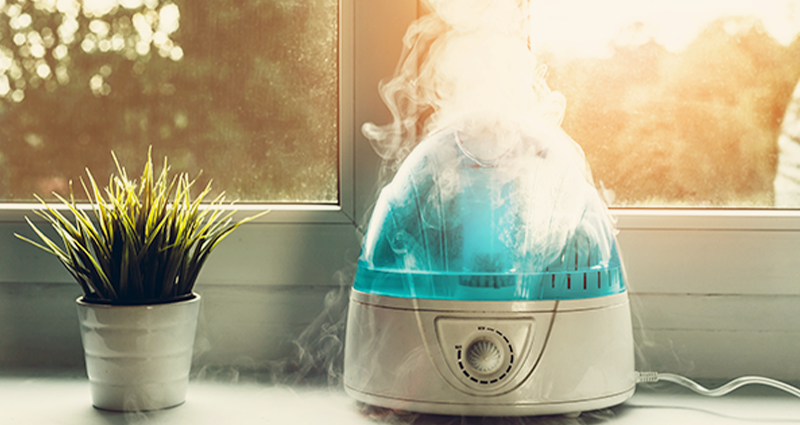1. Roof and shingles
Winter weather can wreak havoc on your roof. Start by visually inspecting the roof. Look for missing or curling shingles, loose or damaged flashing and signs of leaks. Avid DIYers can tackle simple roof repairs, but you should connect with a local roofer for repairs and guidance if you suspect major damage. You don’t want to wait to repair roof damage, which could lead to leaks and more costly problems.
If you feel uncomfortable on a ladder or climbing onto the roof, roofing companies offer inspection services and can take care of repairs this spring.
2. Clean out the gutters and downspouts
Your eavestroughs are vital to proper drainage around your home. Clean out leaves and other debris from gutters and downspouts so melting snow and rainwater can drain away from your home. Again, if you’re uncomfortable working on a ladder, get in touch with a eavestrough cleaning service.
Clogged gutters and downspouts can cause wood fascia boards to rot. Plus, if the water isn’t moving away from your home, it can cause pooling around the house, foundation damage, and even leak into the basement. If the gutters are falling, reattach or replace them.
3. Examine the foundation
Go over the foundation carefully and look for any vertical cracks. If you find any, you should contact a professional foundation repair company right away. Foundation damage is no joke. If left alone for too long, it can lead to basement leaks and even structural damage to your home.
While checking the foundation, you should also look at grading around your home. The ground should have a slight downslope from the foundation so water flows away from the house. If you need to repair the grading, contact a landscaping contractor. You might even consider hiring a landscape contractor for your spring lawn care and cleanup.
4. Look at paths and driveways
Walk around your property and look for damage to your driveway and walkways. Unfortunately, the freeze-thaw cycle we experience multiple times during an Alberta winter can cause cracks and crumbling to asphalt and concrete driveways.
Asphalt isn’t as durable as concrete, but you can patch smaller damaged areas on your own using a local home and garden store kit. Concrete is a little stronger than asphalt but not immune to our winters! If your concrete has significant cracks or sinking sections, consider calling a professional contractor for repairs.
5. Test the sprinklers and irrigation systems
Months of frozen ground can affect your sprinklers and irrigation systems. When it’s warm enough to do so, run the systems to make sure they work correctly. You don’t want to do this when night temperatures are still dropping below zero. Water in the system can freeze and cause damage to hoses and sprinkler heads.
Replace any damaged sprinkler heads and make repairs as needed. If there is major damage, contact a company that repairs irrigation systems soon. Then, you’ll be prepared for spring and summer watering!
6. Check the deck and other woodwork
Check your wooden deck, trim, and structures for any signs of water damage or warping. Look for loose or rotten boards on the deck, railing or stairs and replace those with new. If your deck is due for painting or staining, tackle it now. That way, you’ll have more time to enjoy that outdoor living space come summer.
7. Inspect the windows and doors
Inspect your windows and doors for drafts and leaks, which can bring in water and cold air. If the caulking or weather stripping is shot, replace that now. It can help keep the warm air from entering your home this summer, and you’ll also get a head start on preparing your home for next winter.
Check all your screen doors and window screens for holes. You don’t want those mosquitoes getting inside! You can pick up a screen repair kit from your local hardware store.
8. Check the AC unit
Seasonal air conditioner inspections and services are essential to your system’s performance, efficiency and lifespan. You can hire an HVAC contractor for annual air-conditioning maintenance and repairs, but there are some things you can do yourself.
First, you should remove debris like leaves, sticks and dirt from around the unit outside. Then, change the air filter. According to Natural Resources Canada, you should change the air filters at least once each season or according to the manufacturer’s guidelines. Changing the air filter maximizes airflow, reduces strain on the system and can extend the life of your air conditioner.
9. Look for tree damage
If you have trees on your property, look for broken limbs, rotting or damage. You can remove those dead branches. If you need to remove a high or large branch that poses a safety hazard or an entire tree, call a professional tree removal company. They’ll ensure the job is done safely without damaging your home or property.
10. Prun your trees and shrubs
Early spring, when your trees or shrubs are still dormant and haven’t started to bud, is the perfect time for pruning. Trimming promotes new growth and allows you to shape them before the leaves pop.
Trim branches, trees and shrubs growing too close to your home and other structures. You also want to ensure no branches are growing too close to utility equipment, like power boxes or overhead powerlines. If you suspect a branch is too close to a powerline, contact your utility company right away.


















